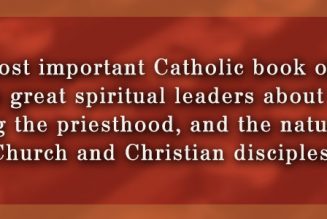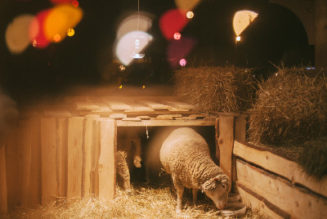
On Dec. 28, the Church remembers the Massacre — the killing — of the Holy Innocents in Bethlehem.
We are three days past Christmas Day, and yet two of those days have already been feasts of martyrs. Christmas may be joyful, but being associated with Christ costs … even your life.
Barely a day after Christmas Day, the Church remembers her first post-Easter martyr, St. Stephen, stoned for bearing witness to Christ as Messiah and God. When Stephen confessed that “I see the heavens opened and the Son of Man standing at the right hand of God” (Acts 7:56), the Jews who heard it “stopped their ears and ran at him with one accord and cast him out of the city and stoned him” (vv. 57-58). They understood that Stephen’s vision clearly connected to Daniel 7:13-14, which they knew was a Messianic and eschatological text. They understood Stephen was calling Jesus Messiah and God, and they killed him for it.
The Church also celebrated the feast of St. John on Dec. 27. Although the only one of the Apostles not to die a martyr, he suffered numerous persecutions for bearing true witness, from the foot of the cross forward, to the one who came in water and blood for our redemption, so that you may believe (John 19:34-35; see also I John 5:6, the reading for the Friday after Epiphany).
Today, the Church remembers her first Christmas Octave martyrs, the children killed by Herod’s soldiers, on his instructions, in the king’s hope of murdering the One whom he thought was a rival for his throne.
As the Gospel for Epiphany tells us, the Magi stopped in Jerusalem for help in their search for the “newborn king of the Jews” whose star they followed. Rather than finding a city welcoming the child, they ran into a hornet’s nest of political and theological intrigue. Herod — who had murdered his own son and on his deathbed instructed his soldiers to round up men in Jerusalem to be slain after he breathed his last to ensure there would be mourning in Judea at his passing — was not above killing children in a third-tier town. Jerusalem’s religious establishment, which had no problem pulling out the right index card when asked where the long-awaited child might be born, was “troubled” rather than thrilled at the news that prophetic day might have arrived (Matthew 2:3-6).
I want to comment on this feast because I want to underscore clearly what the Church remembers today. It remembers a barbaric deed of murder, perpetrated against a whole class of innocent victims: infants, boys 2 years old and under (Matthew 2:16).
I write this to make the meaning of this feast explicitly clear because there are those who would engage in revisionist history.
Last year, both Father James Martin and papal biographer Austen Ivereigh took the occasion of the feast to tweet about immigration. Using the Holy Family’s Flight into Egypt as their hook, they tried to refocus the feast to the plight of refugees.
There’s a grain of truth to that argument: the Holy Family had to live in Egypt for a time. But that’s not what is central to this feast, and what is central to this feast is what made them live in Egypt.
Let’s not put the cart before the horse. If the Child Jesus was not mortally threatened, there would have been no need for the flight to Egypt.
Jesus was threatened by state power that claimed to wield the power of life and death. Jesus was threatened by a ruler who claimed his right included the power to deny another existence. Whether he killed the children or delegated that power to others, “the buck stopped” in Herod’s Palace.
I underscore the centrality of this point because, in addition to revisionism about the Feast of the Holy Innocents, there is also the revisionism of various “seamless garment” and “consistent ethic of life” approaches, which in practice if not in intention, downgrade the “preeminent value” of life to another consideration among a variety of concerns.
As I have consistently written in criticizing the “consistent ethic of life,” the “life” doesn’t mean much if you’re dead. That’s why I maintain that even Vatican II distinguishes between practices that dishonor human dignity and practices — abortion and infanticide being specifically named — that are “unspeakable crimes” against God and man (Gaudium et spes, No. 51).
Just like some try to move our focus from the murder of the Holy Innocents to immigration policies, so others want to refocus our attention from the killing of today’s innocents to a whole plethora of other issues. Then, like now, let’s not lose sight of the central issue: the sanctity (not just the quality) of life.
To make clear the Church’s centuries-old clarity about what this day is about, I selected a 10th-century German illustration, “Bethlehemitischer Kindermord.” The manuscript comes from Trier, in southwest Germany, specifically from the Codex Egberti, a Book of Gospels illuminated for the bishop of that name who occupied the see of Trier in the last quarter of the 900s. I chose the artwork for two reasons. It makes clear the Church’s long understanding (in this example, more than a millennium) of what this day was all about and it pulls no punches in making that understanding visually clear.
The characters all appear in one scene. The victims — the children — are front and center. Two are already dismembered. One has a spear thrust through his beating heart. On the left (fittingly) are their victimizers: the King who points and authorizes the slaughter; his three pawn soldiers in front of him, doing his dirty work; and his three courtiers, with spears, ready either to get their hands dirty or at least defend their employer’s policy.
On the right are additional victims: four mothers, two of whom face us to draw us into the illustration. They weep and lament, alluding to the prophecy of Jeremiah Matthew quotes in 2:18. Two are bare-breasted, which could have both natural and supernatural meanings: naturally, they were likely feeding their infants when the babies were ripped away to be killed, and supernaturally, possibly an allusion to Jesus’ future prophecy about “the breasts that never nursed” (Luke 23:29).
The left and right positions of the victimizers and victims is fitting, not because there is any political agenda here, but because in Scripture, those on the right are blessed and those on the left are condemned (Matthew 25:33-46). (P.S.: Lest someone object that, in that text about the Last Judgment, Jesus rewards and punishes on the basis of care for one’s neighbor, I repeat: the dead are neither hungry nor thirsty and indifferent to clothes and visits).
The Latin text identifies the perpetrator (“Herodes”) the deed (“pueri occiduntus” — the children killed) and the place (“Bethlehem”). The art is medieval, largely flat surfaced and not so much interested in what we might call the “actual history” (did Herod really come along?) as in putting all the protagonists in the mise-en-scène.
The artist doesn’t even feel the need to put the flight of the Holy Family in the background to make the scene whole.
(The flight into Egypt is indeed paradoxical: Jesus, the new Moses who frees man from slavery, in this case to sin, flees to the land where Pharaoh once perpetrated similar infanticide against Moses. Now, a king styling himself “the king of the Jews,” is the new bloodletting Pharaoh in the Promised Land. It’s also a paradox that most of the political leadership of Jesus’ Day we still remember 2,000 years later — Herod and Pilate — are recalled for their complicity in deaths).
Let’s be clear about this memorial: the Church’s vestments today are red not because the Holy Family fled but because the children are dead.
Join Our Telegram Group : Salvation & Prosperity
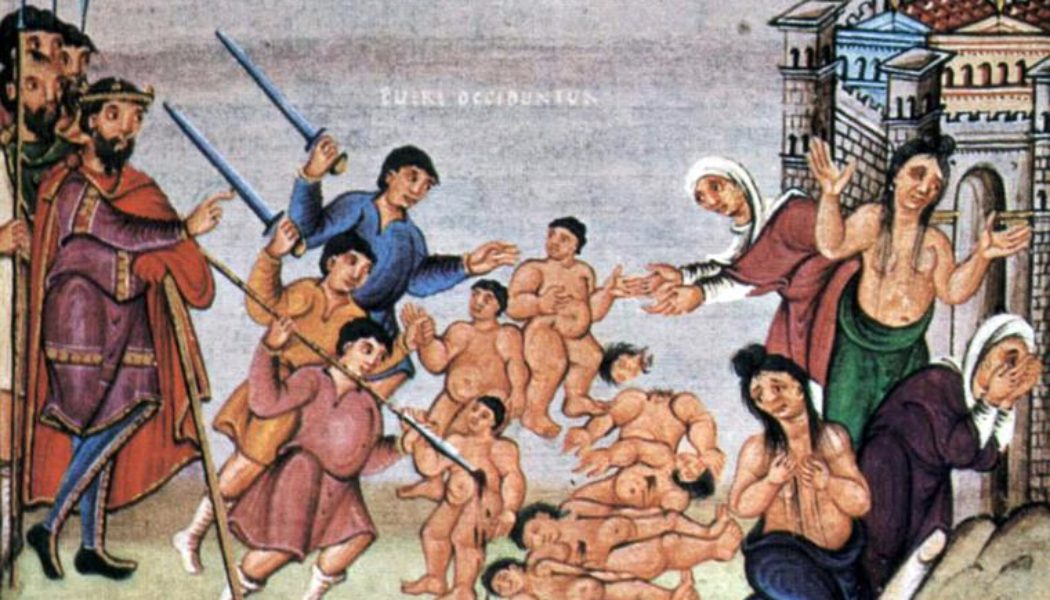
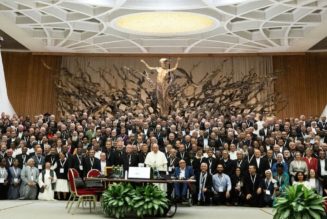

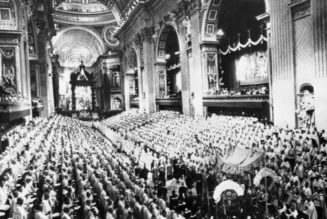
![An open letter to the Catholic bishops of the world on the German Catholic Synodal Path [PDF]…](https://salvationprosperity.net/wp-content/uploads/2021/05/an-open-letter-to-the-catholic-bishops-of-the-world-on-the-german-catholic-synodal-path-pdf-327x219.gif)
